|

High-Tech
Root Canal Therapy
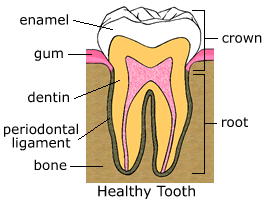 |
The
way root canal therapy is performed today is vastly different
than those done a few years ago, not to mention a decade
ago. The potential level for quality care has dramatically
increased. It is a thing of the past to do root canals
in five to six appointments, or by "touch or feel"
because we could not see. Root canals can be done without
discomfort, faster, and more accurately due to the new
technology available. |
Root
Canal Therapy
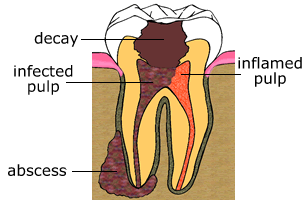 Root
Canal Therapy is a dental procedure, performed with local
anesthetic, which involves the removal of the nerve inside
of the tooth because it has become irreversibly damaged or
infected. This is usually due to the entry of bacteria into
the centermost part of the tooth called the dental pulp (nerve).
ROOT CANAL is a commonly used term for endodontic therapy
or root canal therapy. This procedure involves the removal
of the entire nerve system, as well as cleaning, shaping and
filling of the canal system with gutta percha and a dental
sealer. The procedure enables you to keep your natural tooth,
which is preferable to any type of replacement. Following
root canal therapy, you then return to your dentist to have
your tooth fully restored. Root
Canal Therapy is a dental procedure, performed with local
anesthetic, which involves the removal of the nerve inside
of the tooth because it has become irreversibly damaged or
infected. This is usually due to the entry of bacteria into
the centermost part of the tooth called the dental pulp (nerve).
ROOT CANAL is a commonly used term for endodontic therapy
or root canal therapy. This procedure involves the removal
of the entire nerve system, as well as cleaning, shaping and
filling of the canal system with gutta percha and a dental
sealer. The procedure enables you to keep your natural tooth,
which is preferable to any type of replacement. Following
root canal therapy, you then return to your dentist to have
your tooth fully restored.
Back
to Top
What
Happens During Root Canal Therapy?
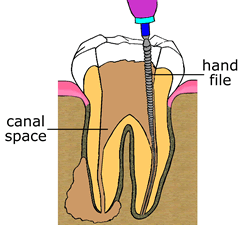
Step one:
After
the tooth is "numbed", a Small opening is made into
the pulp chamber. The canals are located and measured, so
they can be cleansed and shaped using a series of hand files
and engine-driven instruments.
Back
to Top
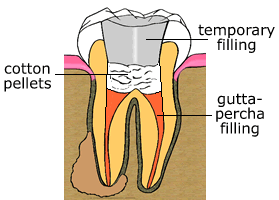
Step two:
The canals
are filled with a rubber-like material called gutta-percha
and the opening is sealed with sterile cotton pellets and
a temporary filling.
Back
to Top
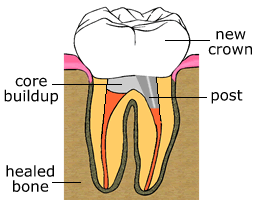 Step
three: Step
three:
The tooth
is restored by your dentist within a couple of weeks. Most
often, a crown is placed in order to protect the tooth, and
if the tooth lacks sufficient tooth structure to hold the
core build-up, a post may be placed inside. Any areas of infection
around the roots will begin to heal.
Back
to Top
Post-Treatment
Instructions
|
